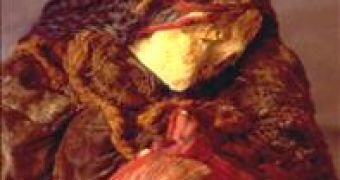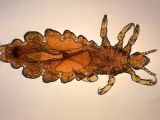They may be nasty, but these parasites are intimately bound to humans and may tell a lot of our past. They can only live on humans and die rapidly out of their human hosts, unable to parasitize any other animal.
Head lice collected from 1,000-year-old Peruvian mummies clearly point that they accompanied humans during their first migration out of Africa, 100,000 years ago. A DNA analysis published in the "Journal of Infectious Diseases" revealed that these lice belong to the same strain encountered around the world and connected to the first human migration out of Africa to the rest of the world.
"It tells us that this genetic type got around the globe right as humans spread and migrated around the globe. We know that this parasite was distributed all over the globe along with us," co-author David Reed, from the University of Florida, told MSNBC.com
Three strains of head lice parasitize humans. Strain A is encountered all over the world, strain B is typical in both North America and Europe, and strain C is rare. One theory stated that B lice evolved independently in the Americas, that the Europeans transported the A lice to the Americas and introduced back to Europe the B lice. But the lice collected off the heads of the Peruvian mummies coming from the southern Peruvian coastal desert tell another story.
"The mummies belonged to the post-Tiwanaku Chiribaya culture," the researchers wrote.
The heads of the mummies, removed from the bodies by looters years before, presented sophisticated braided hair. Over 400 head lice were encountered on one head and 500 on the other. Reed suspects that those braids impeded regular combing, turning the heads into a louse paradise.
Intact DNA from the lice revealed they were all type A. As the mummies are at least 500 years older than the Columbus' discoveries, it's clear that the strain was not brought by Europeans.
Lice can transmit diseases like typhus and Reed wants to see if the lice contain the rickettsia bacteria causing the disease. "It is also possible to test the theory that typhus was a New World disease carried back to Europe by explorers," said Reed.

 14 DAY TRIAL //
14 DAY TRIAL // 
